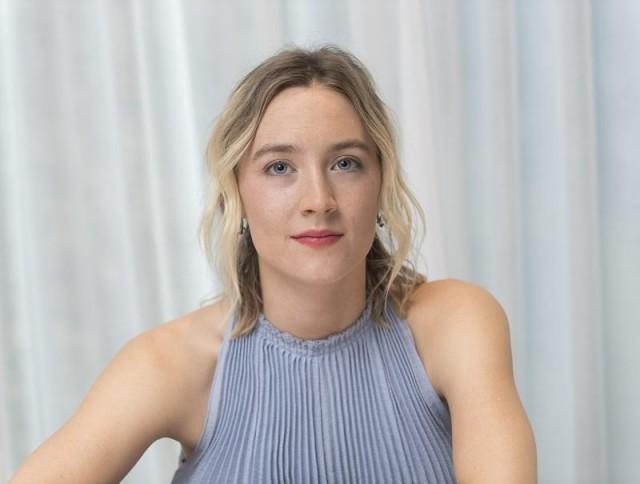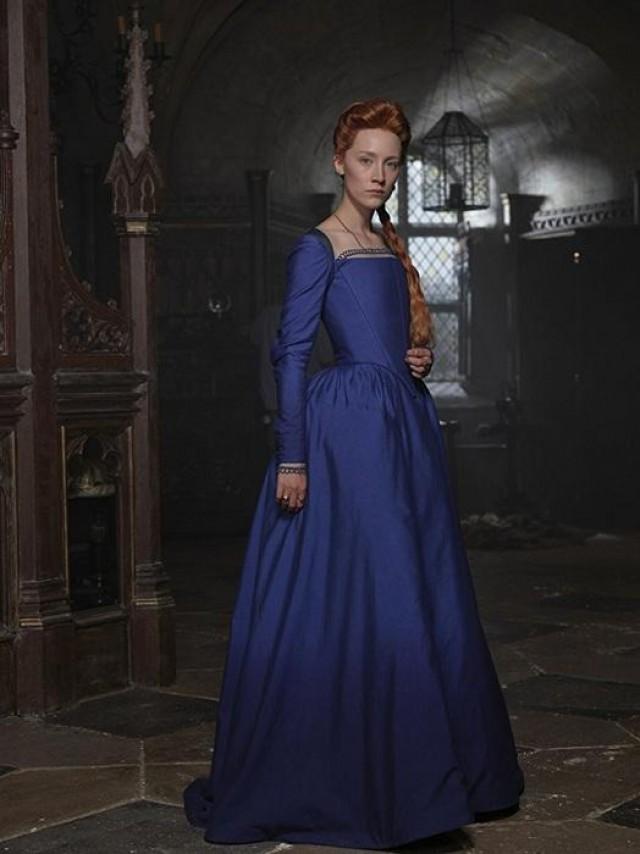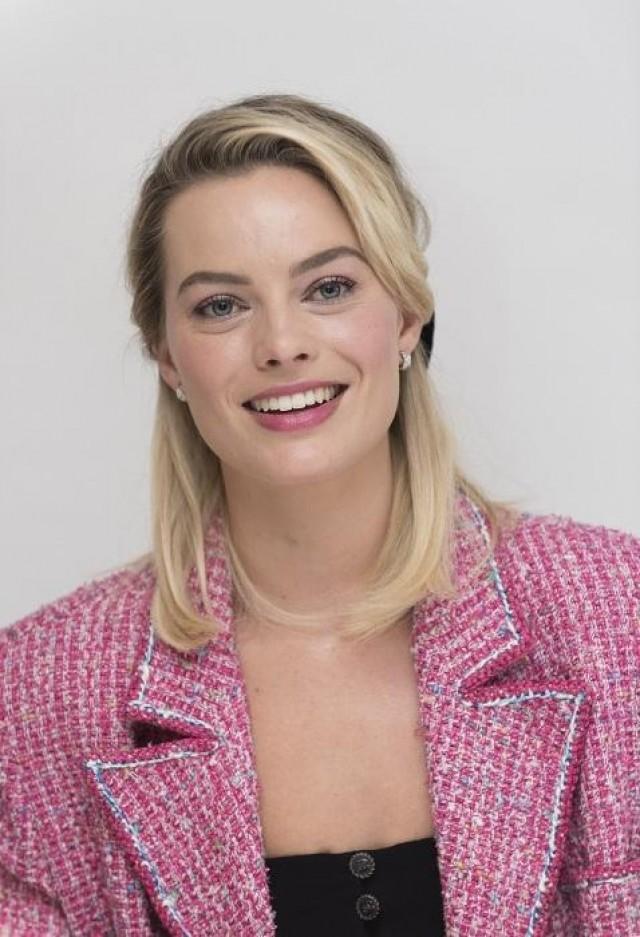Saoirse Ronan, Margot Robbie, and director Josie Rourke talk about ‘Mary Queen of Scots’
Los Angeles — Portraying royalty onscreen has been a Hollywood fascination for a long time.
This year, we have two young talented actresses portraying two legendary and controversial queens and cousins: Mary, Queen of Scots as portrayed by American-Irish actress Saoirse Ronan, 24, and Queen Elizabeth I as portrayed by Australian actress Margot Robbie, 28. Both of the actresses are former Golden Globe and Oscar nominees.
We recently interviewed the two lovely ladies who told us about their experiences in portraying the two respective queens in the Josie Rourke-helmed historical drama based on John Guy’s biography “Queen of Scots: The True Life of Mary Stuart.” The film tells of the 1569 conflict between the two countries of the respective queens.
Below are excerpts of our conversations with them.
Saoirse Ronan

On her transformation into Mary, Queen of Scots:
The biggest challenge for me emotionally was getting into my head that I was playing a Queen, because the Queen is a thing. It’s not a person, it’s an idea and it’s a figurehead. It was lovely to start at that place and to learn everything I could have learned about Mary Queen of Scots through the history books.
But at a certain point I need to put that to one side and basically approach it like I would any other fictional role and one of the things that really helped me with that was the costumes that I wore, my accent, my Scottish accent and the choreographer Wayne McGregor who worked on the film and who was just really helpful when it came to helping me literally embody this person and focus on her physicality. That just really helped.
The transformation was so helpful too, because I had gone into the hair and make-up truck every morning and watched myself go from a much tired-looking very of this to that.
On being surprised when she first met Margot Robbie in make-up and costume as Queen Elizabeth I:
I was yeah, because it’s strong. It’s not really far off from what Elizabeth would have looked like at that stage and when she got into the Golden Age it was a very severe look.
It’s shocking to see that on a person, especially someone like, I know what Margot looks like, and so to see her be essentially unrecognizable took my breath away. So, she compared to Mary because Mary, as you see in the film, has no make-up and is very young and fresh and has dirt on her face and her hair is bedraggled and her clothes are torn, and her hair is messy, and she has been in battle.
And Elizabeth has created this image of herself, this fake image of herself. So, they are both on two ends of the spectrum really, two very extreme versions of a ruler.
On how portraying historic characters has influenced her:
I honestly feel that when you play a character, whether they are real or not, they [should be] real to you and you treat them as though they are a real person because you are becoming them. You get to know them so intimately.
I was talking with Melissa McCarthy yesterday and she was saying that it’s so fantastic to play people who are like not as nice a person as you or a better person than you or smarter than you, or a bit dimmer than you. It can be different versions from you essentially and you can explore people who you want to be or wouldn’t want to be. You are in essence getting to know when you are doing it every time.
In the same way when you make friends with a new person and you pick up ideas from them or opinions or just ways of being. You do the same thing with a character. You never know what it is that is going to stay with you, but something always inevitably does.
I’m even finding that with Mary, I was so physical with it and the movement was such a huge part of her. Now I am doing “Little Women” and I am playing Jo March and finding that I just want to run everywhere. I just want to use the space that I can, and I don’t want to sit still, which I never would have done before. I wouldn’t have done that a few years ago. Playing her has also informed the character that I am playing, so it all just becomes this fluid thing.

On power and when she knows to bow or not to bow to no one:
It comes down to your instincts. If you know yourself well enough, you know when you are willing to compromise and when you really shouldn’t and when you would end up bowing to someone else.
If you are going to neglect yourself, or you are going to be chipped away at, it’s not going to be worth it. It’s about weighing up when is the right time to do that, because I also think if you had that attitude of, 'well I am not going to listen to anyone, I am just doing to do my own thing,' it will be a very lonely existence.
It is important to meet people in the middle and it’s important to listen and to compromise, but you have always got to hold your ground. More than anything just know yourself and what’s important to you and not waiver with that.
On whether she sees herself as a young mother like Mary, Queen of Scots:
I do want children. I have always wanted to have kids, not right now, but I would love to one day. I am very close to my mom, my parents. It’s something that I always expected to have at some stage, but not at the minute though. A dog first.
On what she knew of Mary, Queen of Scots, before she portrayed this role:
I knew a little bit about her and I had heard mention of her when I studied history when I was in school. But there are so many portrayals of her and just aren’t the full story.
It wasn’t until we delved into this and I started to read about her that I knew what had really gone on and how untrue and unfair a lot of the documents about her were. The Casket Letters that were released while she was under house arrest were essentially edited by William Cecil who was Elizabeth’s right-hand man and he framed her and made it look as if Mary was plotting to kill Elizabeth, which is why she got killed.
So Elizabeth kept her under house arrest for like 20 years, and she was moved around from one horrible estate to the next and they progressively got worse and worse. She was kept in rooms that were dark and cold and she put on weight, and she wasn’t allowed to exercise. Her health went downhill and her health just deteriorated over the years. But Elizabeth wouldn’t have her killed, but also wouldn’t free her either. And so, Cecil was dead set on destroying her and this is how he did it. So, it is literally fake news.
Margot Robbie

On her transformation as Queen Elizabeth I:
It wasn't really written in the script to have quite the aesthetic transformation that you end up seeing on screen. It really came out of conversations about how Elizabeth came to be the image of Elizabeth that we imagine in our heads, the fiery wigs, the white skin, all the rest of it.
Once we started researching smallpox because she did have smallpox and researching the effects of that and how it's something like 60% of people who had smallpox were left permanently scarred, particularly their faces and that led to a conversation oh this makes sense why she kept piling on the thick make-up.
Then it also bled into the conversations of having a mask, cutting off her ties with humanity slowly but surely. By the end of it, she really is the throne.
There's maybe a glimpse of a person still there but she really has gotten to a place where she has sacrificed her humanity in order to rule successfully. It took quite a few people — and three to four hours — to get Elizabeth I ready. And in the movie, it took quite a few people and three to four hours to get me ready. It was art imitating life, yes.
On whether she enjoys wearing make-up in real life and when she feels beautiful:
I like it sometimes, yeah, on certain occasions and I like it most when a talented team of people do it to me because when I do it, it's one thing, when Paddy does it. It is nice but I don't like it all the time. I certainly love not wearing make-up a lot of the time too.
I feel beautiful when I am happy and calm.

On what she brought to this part:
I really wanted to find the humanity in her. I mean the film, generally, really explores the cost of power and what it means to be a leader especially at that time; and the sacrifices you have to make in order to sustain that sort of power.
Certainly Elizabeth made huge sacrifices so I was interested to explore the girl inside her, [the one] who didn't want to be queen. That was something I wanted to focus on. I wanted to play in scenes. I wanted the voice always in her head to be like I don't want to be: I don't want to be in the position, I don't want to be queen, I don't want to be involved in this scheming and the plotting and the death threats and all the rest of it. I just want to be a normal woman. I want to go marry someone I'm in love with and I want to live on a farm and have a simple life.
I was really fascinated with exploring that side of Elizabeth, though you don't see it. She hides that. I think that's probably her biggest strength is her ability to shut out all those feelings and look at the big picture and the bigger goal and do it for England, you know, it was always I believe all her actions were for the greater good of England.
On balancing work and married life:
Yes, I quickly figured out that I didn't have time to do all those things work, friends, fun so I kind of mushed them all together and now it's like one, you know, I work with my friends and my husband I have a ton of a fun working and it's a pretty sweet deal in my eyes.
I know sometimes a lot of friends are like all you do is work and I'm like oh, I know but I really I love it. I love being on set, I love developing projects, I even really like the financing side and the post-production and distribution and I have a lot of fun doing it and I do it with people I love so it's always fun. Don't worry, I don't feel robbed of my '20s. I still find time to be a 28 year old.
Josie Rourke
_2018_12_03_16_23_26.jpg)
On working with two amazing actresses in this film:
So these two young women are the two most inspiring young women I have ever had the pleasure to work with. The thing that was incredibly important because this is my first film, is that they also really helped me. You know, they understood that I'd never done this before and what they wanted me to do is be able to get the best out of them so a lot of that for me is about conversation, it's about finding the space for them to be able to to do and give that performance.
It's also about challenging them because actually, really great actors like to be challenged; really great actors like a note from a director. Often, directors leave them alone because they're afraid of their talent and their wattage and their star power but the warmth of these two women, the depth of that conversation they had and although they're playing these two queens, very distant maybe from their experience, what they did do is put a huge amount of themselves like I think Saoirse said to me that's the first time she'd played a role where she felt like she was bringing her own life into it and that sense of connection so that was tremendously important.
On what scene she shot first since this is her first film:
That's such a good question (laughs). So the first shot I ever did as a director on screen is that shot in the movie where Margot is looking in the 3 mirrors and she's reflected, so she's looking at the portrait of Mary the miniature and you see Margot's face in three mirrors that her ladies in waiting are holding up, so I basically picked the most difficult shot to line up in the whole of the movie to do on the first day.
But I had this amazing cinematographer in John Mathieson and actually in a way to begin everyone with an act of technical concentration on the first day was quite a good thing to do because it really focused our brilliant crew, you know, to see where Margot is getting ready so we've got hair and make-up and costume all just leading into one delicate moment like that so that's what I picked and it really brought us together as a team.
On her decision to include a scene of Mary and Elizabeth meeting when in real life they never did:
This scene between these two queens meeting which we know did not happen historically is one of the great scenes of drama so these roles, Mary and Elizabeth, they're like Hamlet for young women, you know, and Katharine Hepburn has played that scene where she's faced off as those two queens. Helen Mirren, I've seen play that scene. There's an unbelievable tradition of people doing that on film. Vanessa Redgrave and Eileen Atkins met in that movie so all of these women, these fantastic actors who are our icons, have played that scene.
The other thing is this whole movie drives towards that encounter so Beau Willimon and I always said let's find the opportunity and this is me, the theater director, to have these two women, these two incredible actors play a seven, eight minute scene where it's on them like it's wonderfully shot and they, you know, the hair and make-up and Alex's work on the costumes is incredible in that moment but that's very raw. They have to carry all that with the power of their acting and to give two young women the opportunity to do that onscreen was incredibly important to me. — LA, GMA News




